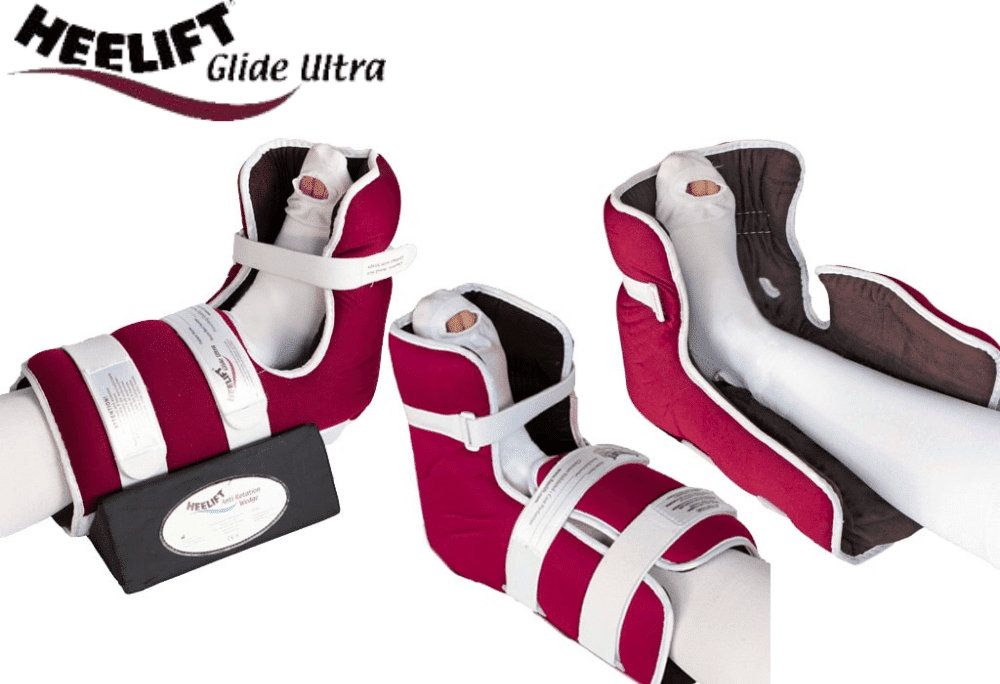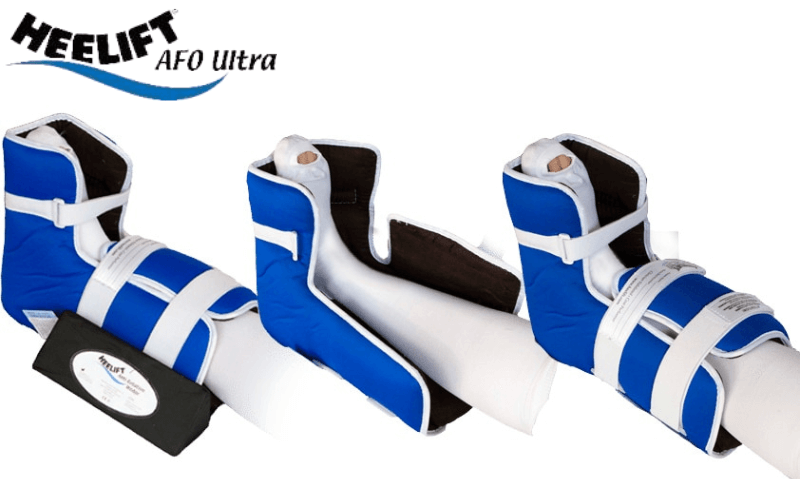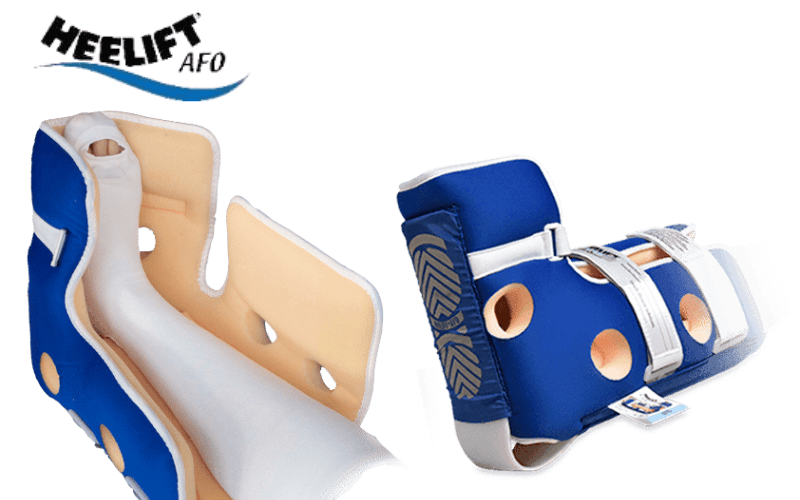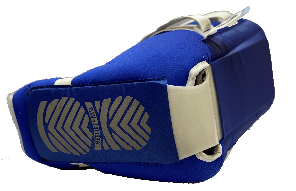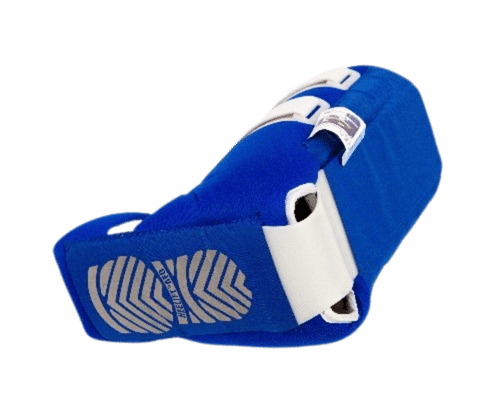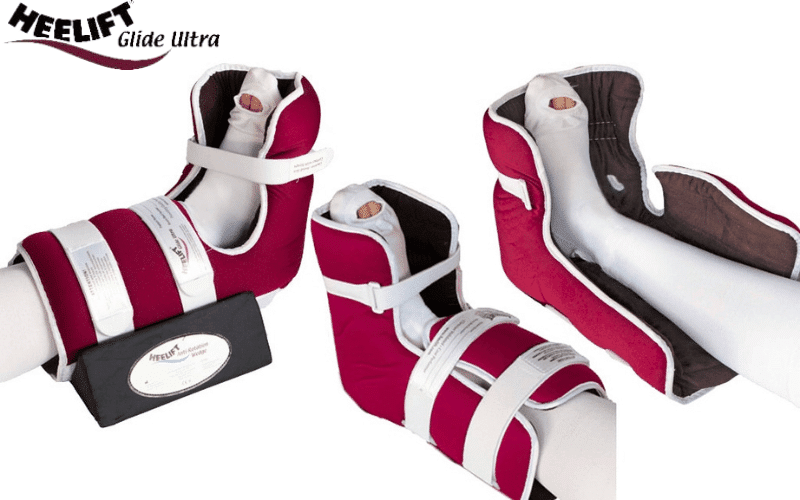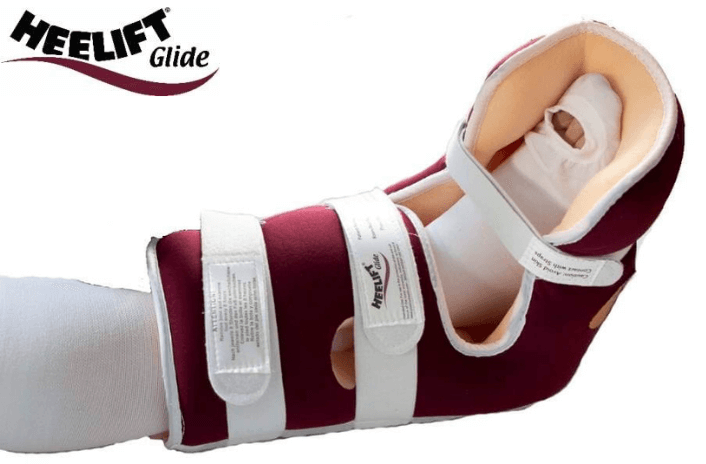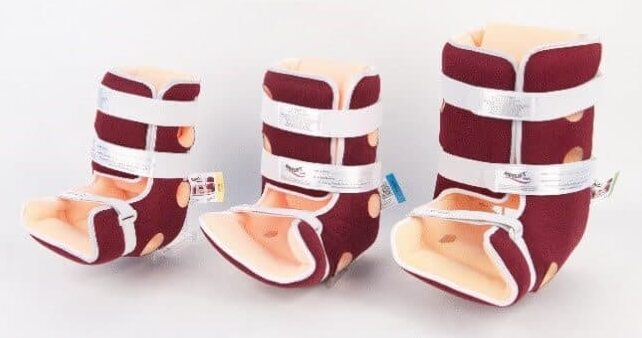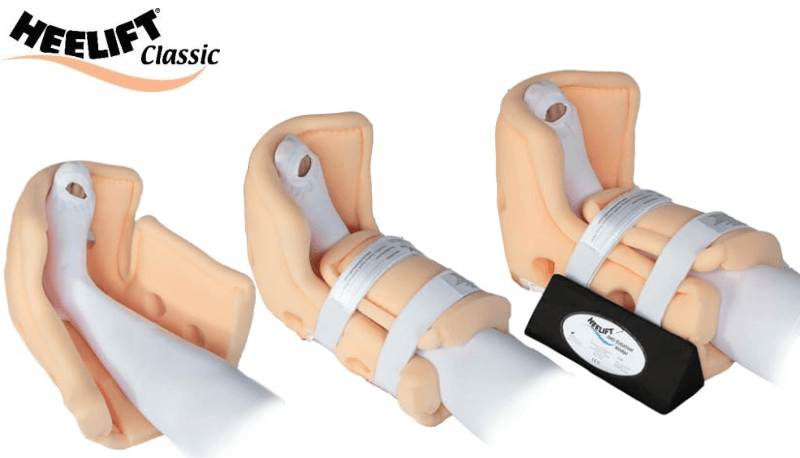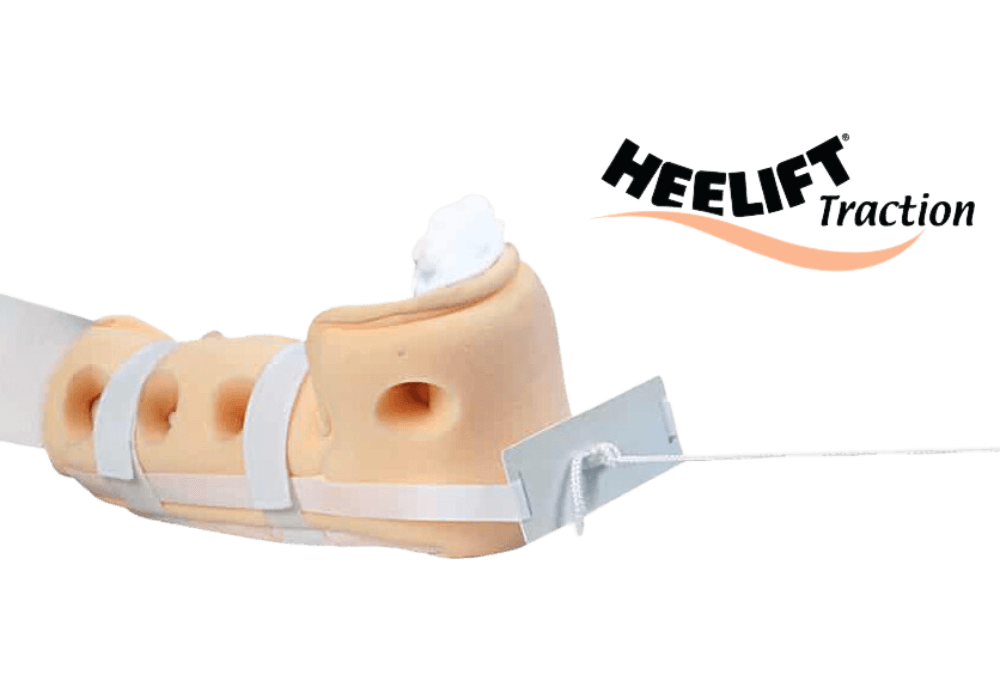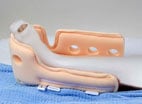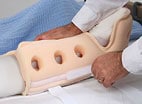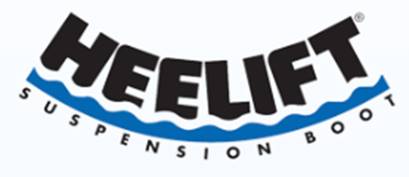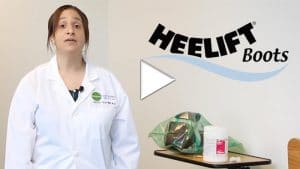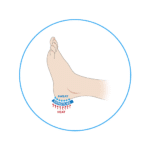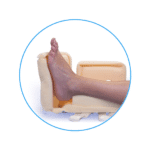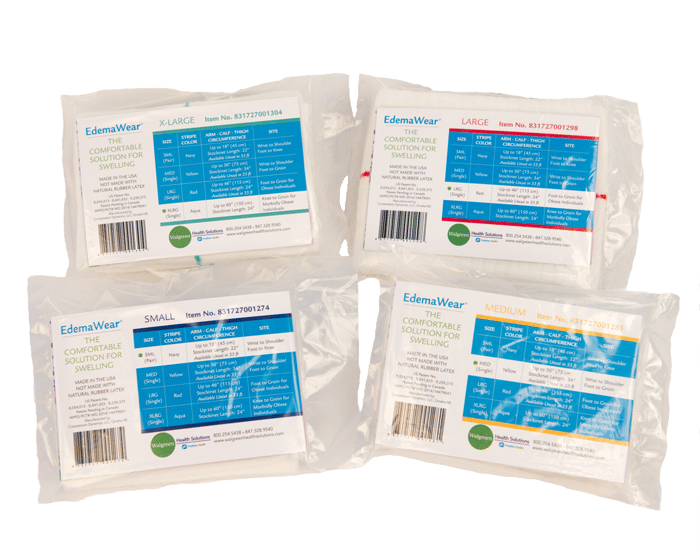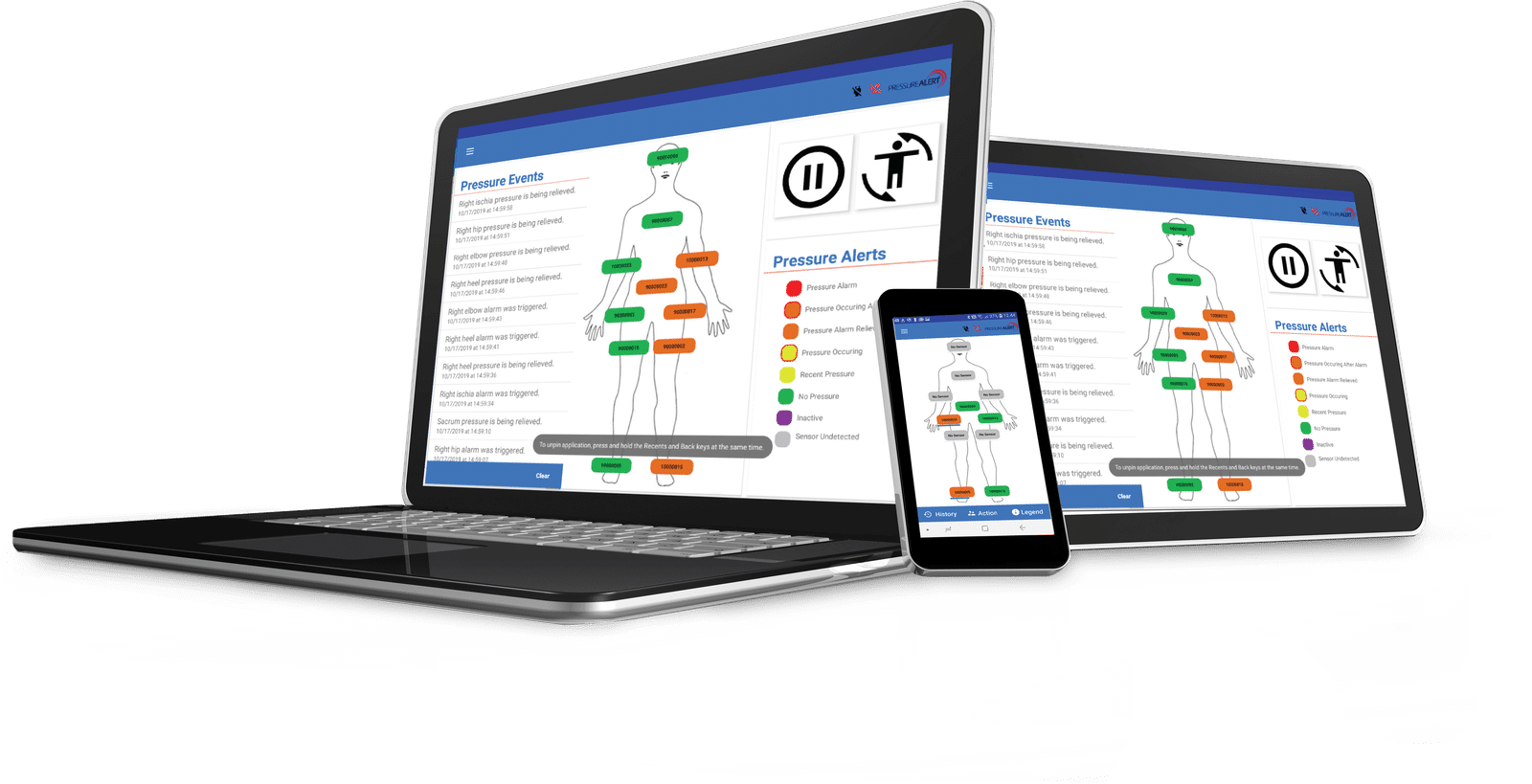Simple instructions with Visual Examples of How to apply HEELIFT®.
STEP ONE: Place foot inside the boot with the heel resting above the heel opening.
STEP TWO: Thread straps through D-rings and secure the straps. APPLY THE STRAPS LOOSELY.
STEP THREE: Test the fit under the heel opening and under all straps. The straps should not be touching the skin.
- To HAND WASH: use mild cleanser and warm water.
- To MACHINE WASH and DRY: secure straps and place in net laundry bag or pillowcase.
- To SANITIZE after washing: use an antiseptic spray.
- To STERILIZE: Keep the straps loosely affixed, use standard protocols with a steam autoclave. Allow a few hours to cool and dry completely
Customize HEELIFT®
Every HEELIFT® boot is ready to use right out of the bag, but if required, can also be customized to suit your patient unique needs.
HEELIFT® AFO, Glide and Classic all include a spare elevation pad to facilitate customization. HEELIFT® AFO Ultra and Glide Ultra boots have a removable elevation pad cover for this very same reason. Every HEELIFT® boot is ready to use right out of the bag, but if required, can also be customized to suit your patient’s unique needs.
Achilles Tendon: If redness occurs in this area, cut a “V” shape out of the fixed pad. If using both pads, customize the upper pad.
Malleolar Decubitus: Cut away foam on the fixed pad surrounding the ankle as needed. Cut the spare pad in half and place it along the inside of the boot increasing protective space around the injury.
HEELIFT® Anti-Rotation Wedge
The Anti-Rotation Wedge gives you the flexibility needed to stop rotation in immobile patients. The easy to apply, reusable wedge attaches to either side of the boot, and prevents rotation.
- Use with any HEELIFT® Boot (Standard or Petite)
- Takes just seconds to apply
- Works for both external and internal rotation
- Reusable
- HEELIFT® Ultra models include an Anti-Rotation Wedge
The Anti-Rotation Wedge gives you the flexibility needed to stop rotation in immobile patients.
Foot Rotation: Cut the spare pad lengthwise. Remove adhesive backing and attach the spare pad in a horizontal position along the inside of the boot parallel with the leg.
SCD and HEELIFT® Boots: Apply the boot normally with the SCD sleeve and place the tubing so that it exits out of the opening as shown.
Every HEELIFT® boot is ready to use right out of the bag, but if required, can also be customized to suit your patient’s unique needs.
What Is A Pressure Injury?
A Pressure injury is an injury to the skin as a result of sustained pressure applied to the skin over time (friction and shear play a role as well). The pressure results in reduced blood flow and eventually causes skin breakdown and the development of an open wound. If the conditions leading to the sore are not rapidly corrected, the localized skin damage may spread to deeper tissue layers, affecting muscle, tendon, and bone. If not adequately treated, open ulcer can become a source of pain, disability, and infection.
Why is Prevention Important?
Prevention of pressure injuries is key because treatment can be difficult. Prevention plans require the skin to be kept clean and moisturized, frequent careful changing of body position (with proper lifting, not rubbing across surfaces), use of special mattresses or supports, management of other contributing illnesses, and implementation of a healthy diet. Relieving or reducing the pressure on the area is essential.
![HeeliftBootOptions hlorignl-hr[13092] transparent background](http://walgreenhealthsolutions.com/wp-content/uploads/2023/07/hlorignl-hr13092-transparent-background.png)












![hlorignl-hr[13092] transparent background](https://walgreenhealthsolutions.com/wp-content/uploads/2023/07/hlorignl-hr13092-transparent-background.png)
